Photo Essay: Building a Dry Toilet with Jungle Mamas
[post_thumbnail size="550"]
In their work with Achuar communities, the Jungle Mamas team have observed that the leading cause of infant mortality and illness is diarrhea. So, since 2010, Jungle Mamas has been supplementing its work on safe birth and family health in the communities of Pumpuentsa and Kurintsa with an ecological dry toilet project.
Protecting Communities and the Environment
There are no septic tank systems in Achuar territory, so families are accustomed to depositing their waste in - you guessed it - the open air. Some indigenous communities are accustomed to finding a spot in the rainforest and, if they have time, digging a hole in the ground.
This has worked for thousands of years, however, as communities come into increasing contact with the world outside their territory, it is no longer a viable option. Communities are now more spatially distributed around airstrips, and families are living closer together out of necessity, leading to overlap of human waste deposits and contamination of local water sources.
Even with safer practices, rainstorms wash human waste into the creeks and rivers - the very water sources that families use to survive. Not only is human waste management an issue that affects the health and well-being of all humans worldwide, but it can be a negative contributing factor to the environment.
The Jungle Mamas team have been collaborating on the ecological dry toilet project with the local expert on Eco-sanitation, Chris Canaday, who has worked with indigenous and non-indigenous peoples throughout the Amazon and the Sierra of Ecuador.
By implementing a safe, sustainable, and economical solution to human waste management, we can take great steps towards ensuring the well-being of communities and entire ecosystems for generations to come.
Building the Toilet, Step by Step
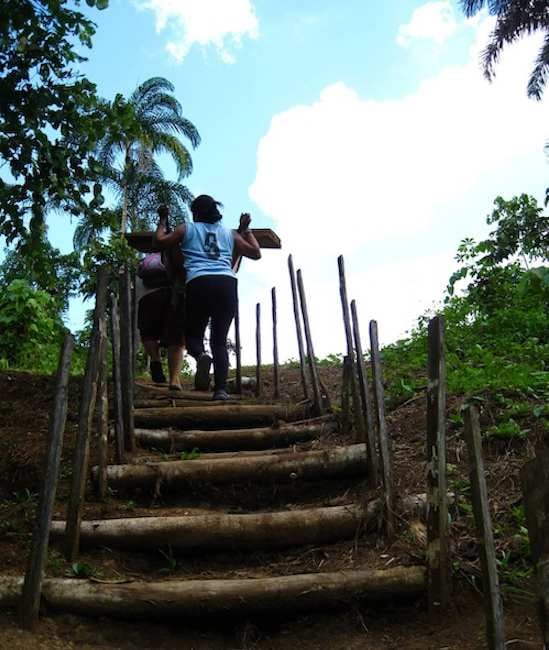
All of the main construction materials such as tin roof parts, are flown in to the community on a small charter plane - there are no roads into Achuar territory. Here we see Narcisa Mashienta, Jungle Mamas local coordinator, loading tiles for the floor in a heavy wheelbarrow.
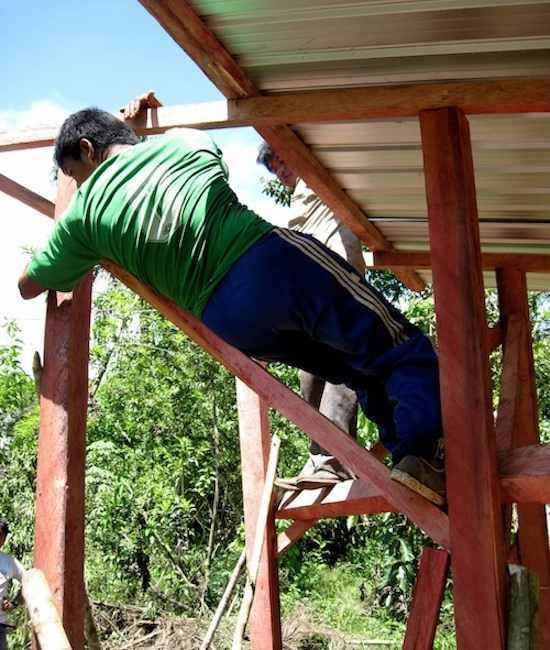
Local families provide the wood for their dry toilets and construct the frames. The wooden structure can be completed in approximately one day.
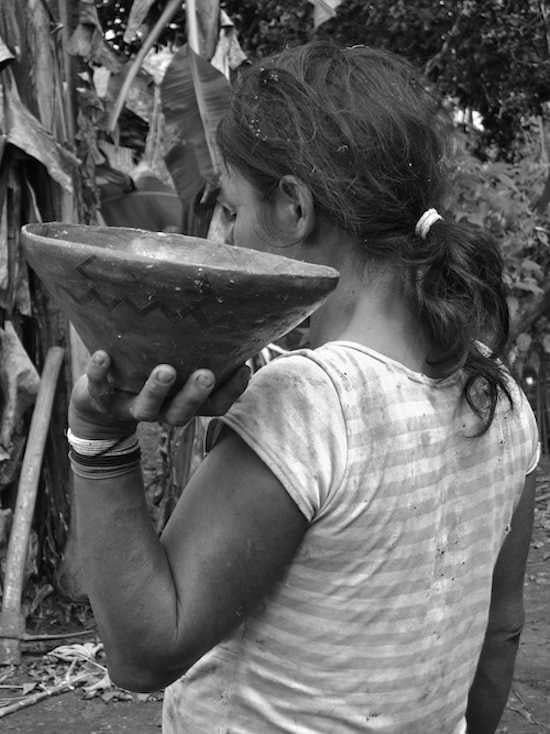
No work could be done in such heat and humidity without the delicious refreshment of chicha - fermented manioc root beer that is a staple of the Achuar diet (and for many other Amazonian indigenous people).
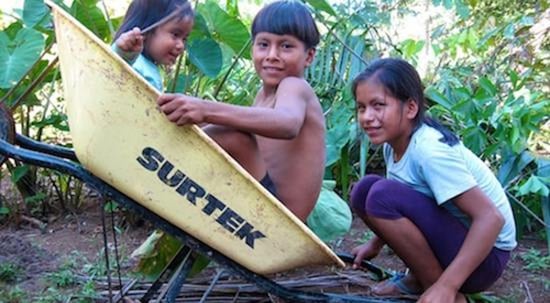
Children always liven the work of building dry toilets, and even help out! It’s important to have people of all ages participating so they can learn about ecological dry toilets - after all, they are the next generation...
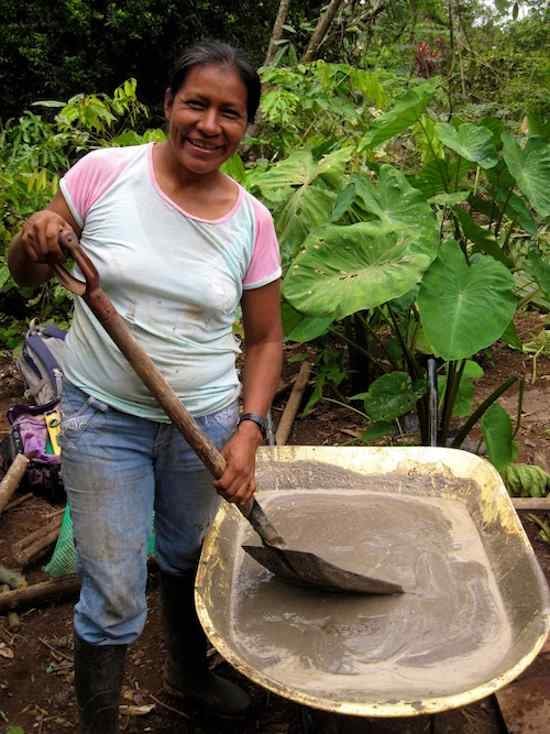
Rosa is helping by mixing the perfect cement batch for making the ferro-cement floor for the toilets. The ratio of sand to cement is 3:1.

Rosa and her nephew help to place the rebar and chicken wire frame that will serve to bolster the floor. It’s nearly ready for the cement!
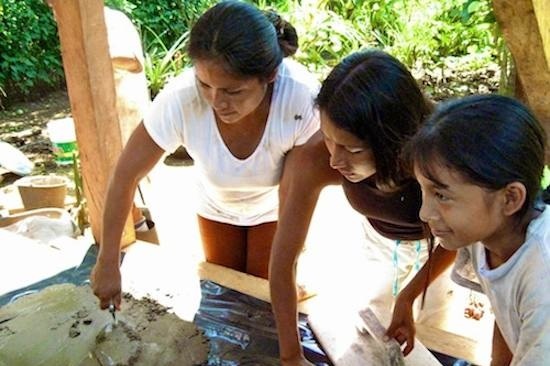
Local coordinator Narcisa Mashienta, on the left, teaches a young woman and her younger sister how to spread and distribute the cement for the floor.
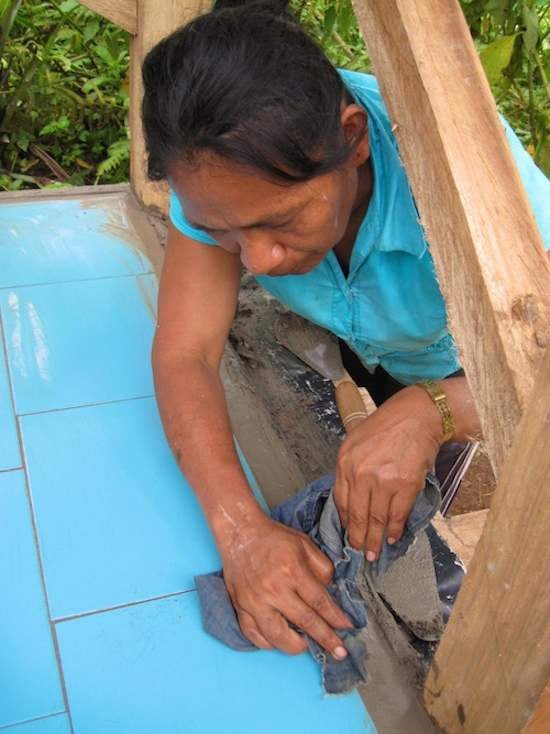
Another local community coordinator, Mercedes, putting the finishing touches on recently-laid tiles. She is cleaning little bits of cement and smoothing out the grout.
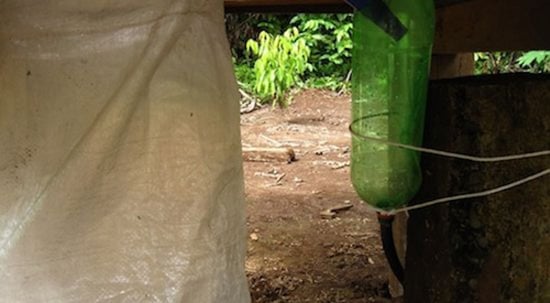
This is the underbelly of the ecological dry toilet - the essential part of what makes these toilets so safe for the environment. The urine is separated into a plastic funnel (pictured inside the recycled green 2L bottle), which is connected to a 12 meter perforated hose that feeds healthy nitrogen to the plants in the garden. Urine by itself is not harmful for the environment. Feces are then deposited into a recycled 100 kg rice or flour bag and covered with ash.

The solid waste in the rice sack is then covered with ash that families collect from their kitchen fires. Throwing ash on newly deposited waste not only works to eliminate odors, but also keeps flies and harmful microbes from entering and exiting (and thus contaminating the surrounding area). It is a closed biological system, and one that can be used as compost or dry covering material for new feces after a 6-month drying period in a dark, cool location.
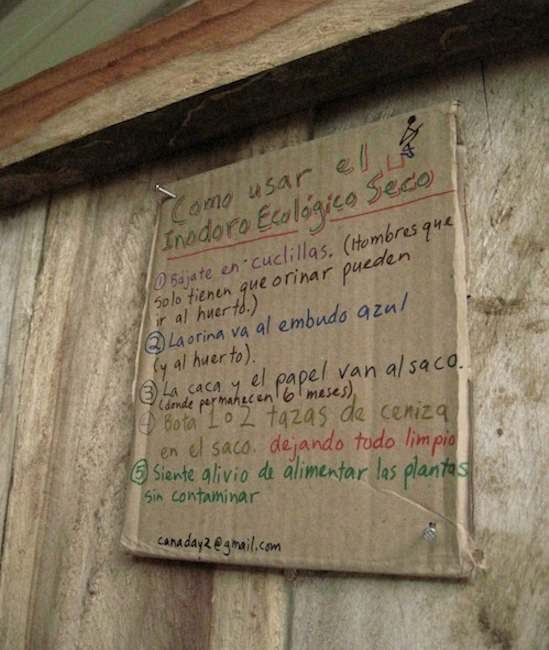
Each dry toilet comes complete with instructions for how to use it.
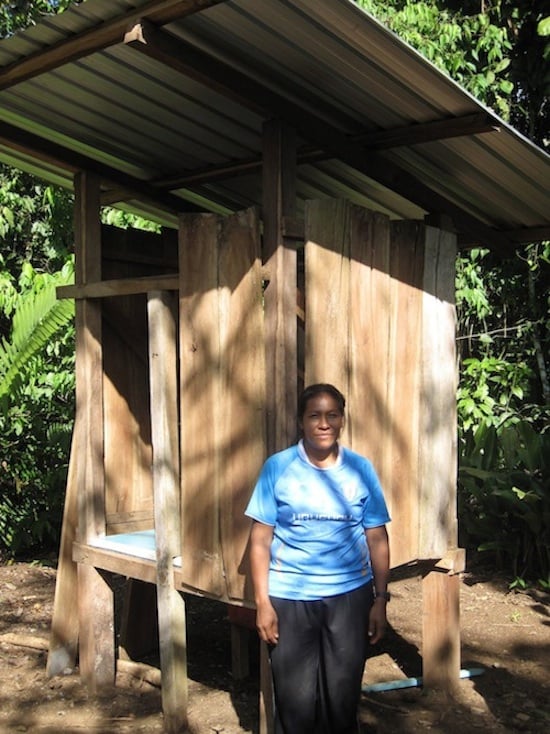
Before her dry toilet was built, Rosa said, “I remember when my son was a baby - he had a lot of diarrhea. But then in the Jungle Mamas workshops, they talked about how these dry toilets can stop diarrhea, and I thought, I need one of those for my family. And that is why I am so excited to have one.”
Here she is, proudly standing by her near-complete dry toilet. The only thing that remains to be completed is the door, which was already in the works when this photo was taken. The dry toilet is already being put to use and she and her family are very happy.
By the end of 2012, Jungle Mamas hopes to have built a total of 18 ecological dry toilets.
For more information, and to learn how you can contribute to this unique project, please contact Robin Fink at rfink@pachamama.org.ec.